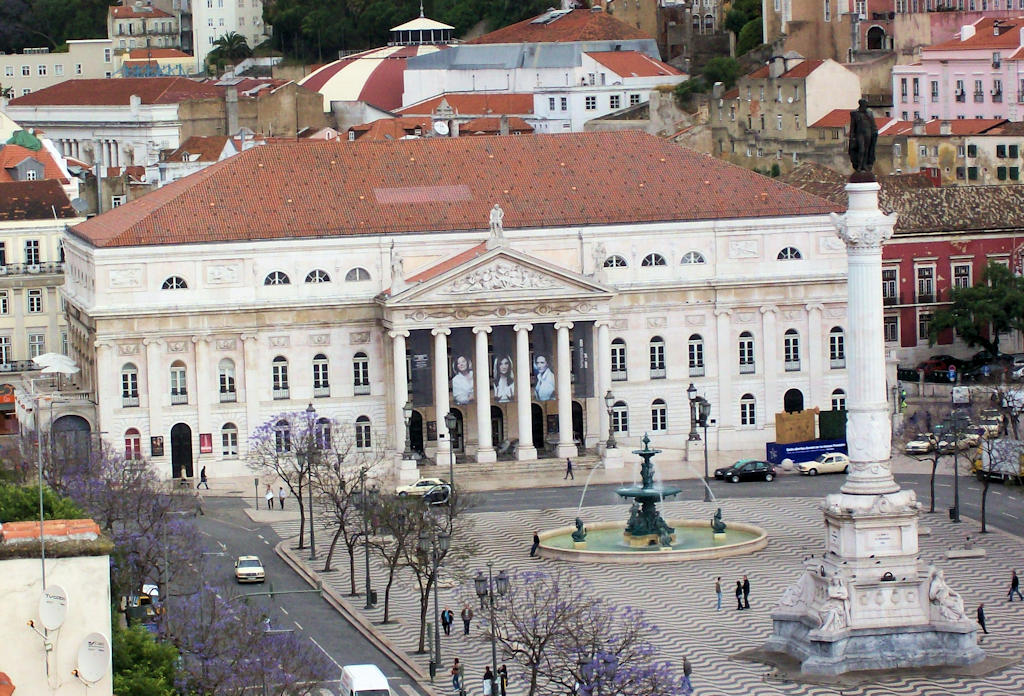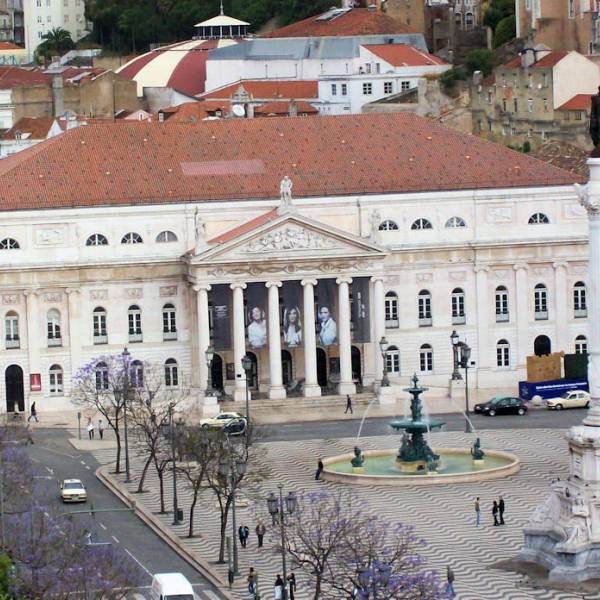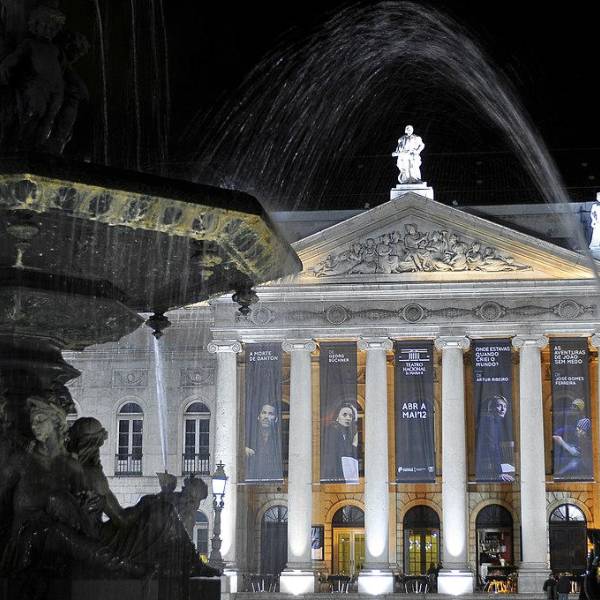The theater was constructed on the ruins of the Palácio dos Estaus, the former headquarters of the Inquisition, which had been destroyed by fire in 1836. Designed by Italian architect Fortunato Lodi, the choice sparked some controversy. Construction began in 1842 under the guidance of Almeida Garrett, and in 1846, the theater finally opened its doors.
The architecture of Teatro Nacional D. Maria II is a captivating blend of neoclassical style, reflecting the grandeur and elegance of the period. Majestic chandeliers, ornate decorations, and plush seating adorn the interior, immersing visitors in a world of opulence. The main auditorium, with its impeccable acoustics and unobstructed views, provides an intimate and captivating experience for the audience.
Throughout its history, Teatro Nacional D. Maria II has been a center of artistic and cultural significance in Portugal. It has hosted a wide range of performances, including plays, operas, ballets, and music concerts, showcasing the talents of both national and international artists. The theater has served as a platform for creativity, innovation, and the preservation of Portuguese cultural heritage.
Beyond the main auditorium, the theater houses smaller performance spaces, rehearsal rooms, and exhibition areas. These spaces provide opportunities for emerging artists to develop their skills and for visitors to explore the diverse facets of the performing arts. Workshops, seminars, and exhibitions further enrich the cultural experience offered by Teatro Nacional D. Maria II.
Recognizing its historical and cultural importance, Teatro Nacional D. Maria II was classified as a national monument in 2012. This designation solidifies its significance as a cherished part of Portugal's cultural heritage and ensures its preservation for future generations.
Lisbon.vip Recommends
Teatro Nacional D. Maria II stands as a testament to the enduring power of the performing arts, reflecting the nation's artistic evolution and contributing to its cultural legacy. It remains an architectural gem and a cultural landmark that continues to captivate audiences, preserving the beauty and significance of theater in the heart of Lisbon.
Map View





